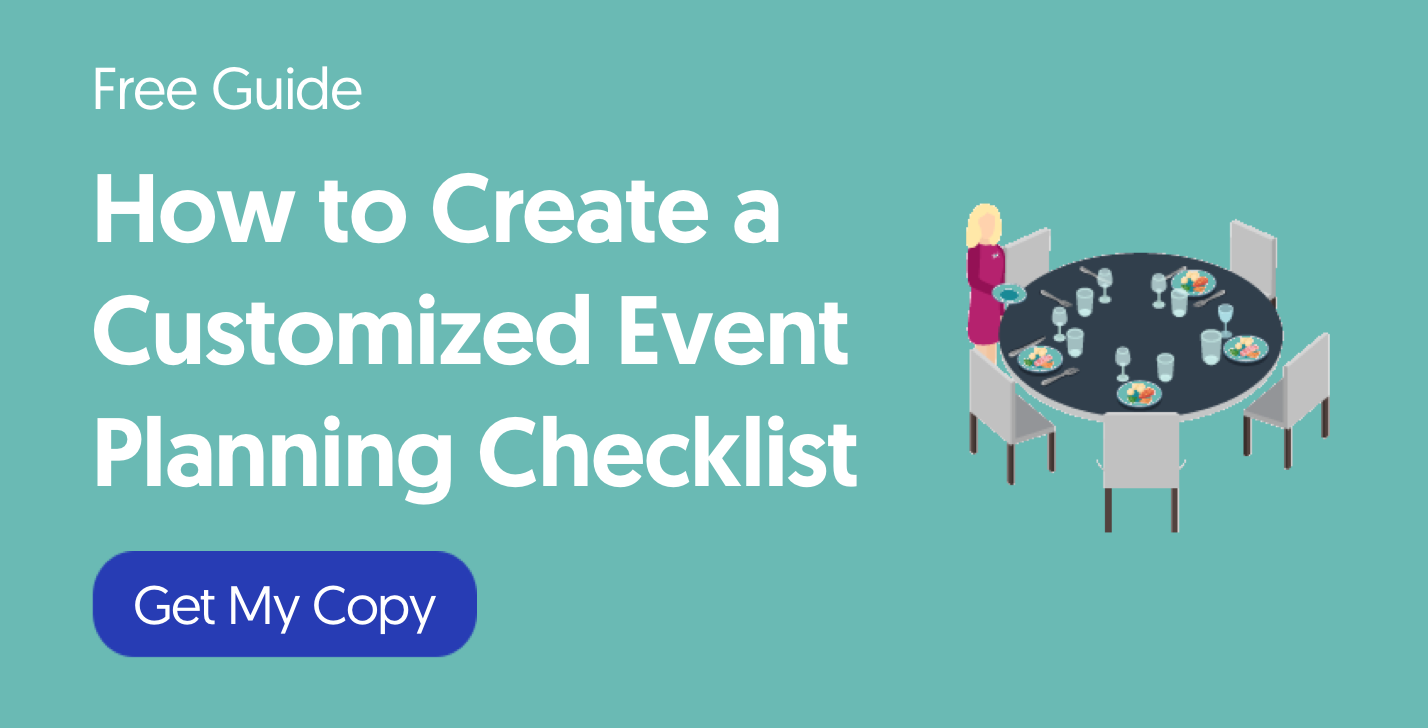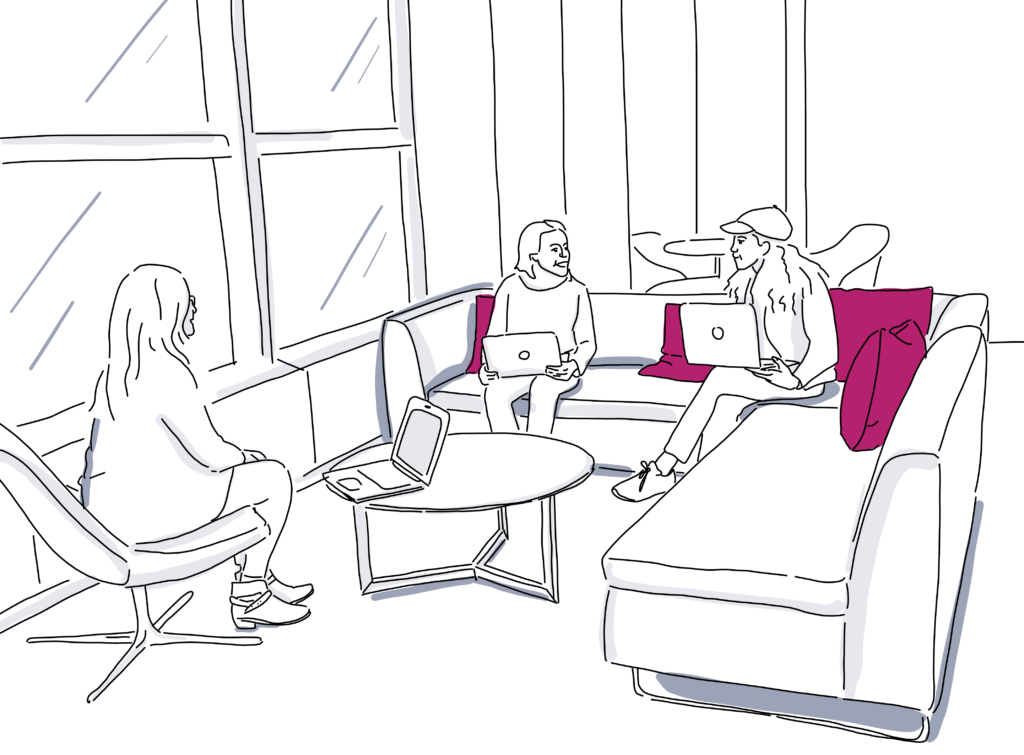
21 Tips to Share the Best Event Diagrams With Clients
Sharing floor plan diagrams can add value throughout the event planning process. Showing off awesome 3D designs of prior events can help land clients who are inspired by visuals. Sharing also improves client collaboration, so directives are clear and decision-makers stay on the same page.
But you should not give clients full access to your event diagramming software at all planning stages. This is a recipe for miscommunication, mystery layout changes, and even lost designs. Read on for essential tips to learn how to best share event diagrams with clients so you meet their high expectations without missing a beat.
Who should you share in-progress event diagrams with?
Offer access to the layout to people across the planning team”the client is only one of many who benefit from ˜view’ or ˜edit’ access. Learn the client’s taste or find venue problems before you get too far in the process when you keep vendors and clients in the loop.
1. The venue staff
They will need access when it comes time for set-up. But consider sharing it early so they can double-check measurements, confirm the layout, and discover errors before they become a problem.
2. The catering team
They can work more efficiently when they know how much space is available for prep, where to set up, and what may impede their work. The caterer can also make requests”whether for additional prep space or extra outlets for coffee service.
3. Vendors
They can also spot issues. Knowing that doorways are wide enough for deliveries, for example, prevents delays when their team has to break down a pallet that won’t fit through the rear entrance.
4. The photographer
S/he can examine the layout to find and account for shot-blocking columns, difficult angles, and poor lighting.
Not everyone needs edit access”you can give them a PDF copy or go over it in person”but major updates to the layout need to be communicated so they’re aware of changes.
Tips for successful event layout diagram collaboration with clients
1. Have layout examples ready from the start
If you’re basing your layout on a previous event, an example diagram gives the client a visual to kick-start the planning process. A 3D diagram combined with photos and videos of the past event puts the client in the action so they can envision the final product”and what it takes to get there.
2. Let the client ˜show’ you what they want
Turn over a blank slate to the client, let them create a layout or two and turn their ideas into a reality that works. This can be on paper or using your layout design tools (just be sure to label the file clearly). You’re the pro, and while your knowledge builds a better event, knowing the client’s vision may give you fresh ideas”or at least let you know where to start. You can inform the client of any snags you notice upfront”not enough electrical outlet availability, displays impeding the venue’s wheelchair access, or fire code violations”and work through the options.
3. Be mindful of giving blanket ˜edit’ access to clients
Unless the client really needs the ability to edit, view-only access or sharing via the public link option may be plenty. If the client needs editing capabilities, add them as a collaborator and select the specific editing access they require.
Each collaborator should have their own access rather than a blanket log-in. Set permissions for each person based on how they contribute to the process, whether they need access for seating attendees, editing all diagram details, editing existing objects only, checking in guests, or viewing and commenting without editing access. This makes it clear who is making changes and when, and it makes it easier to restrict access for a single person should it become necessary.
4. Lock event elements in place
Lock specific objects in place if they must not be moved: The stage, permanent fixtures, columns, and doorways”any objects that need to stay as-is”can be locked in place by highlighting and clicking the lock button in the edit panel. This allows clients to adjust other elements without disrupting other parts of the layout. Similarly, grouping objects that must remain within a specific footprint allows the client to move, adjust, and rotate the group without altering the size or spacing of the arrangement.
5. Keep previous versions of the layout in case you need to backtrack
Use version history to keep track of changes to the layout. Floor plans evolve constantly in the runup to the event. Toggle between options to show the client the possibilities before making significant changes to the layout, or switch back to an early plan if the client decides they wanted the extra seating after all.
6. Collaborate in real-time to reduce inbox clutter
Clients and vendors can watch and comment on changes as they happen, saving time and back-and-forth email requests. This fosters a sense of cooperation within the group and can decrease the need for multiple changes”boosting productivity for all parties involved.
7. Start with an event layout template you know has worked
Begin from experience, and personalize the layout from there. The client doesn’t always understand the space or flow. Showing them layouts that have worked (or caused challenges) in the past can prevent bigger problems down the road. Rather than telling them their vision doesn’t follow floor plan best practices, show them how you’ve tackled challenges in the past.
8. See the event space IRL for comparison
Tour the space with the client to account for concerns you can’t spot in a diagram, like low ceilings, columns that may block views, doorways that could interfere with dancing, and more. Compare the diagram with photos of previous events to catch problems early and ask detailed questions on your venue site tour.
9. Implement a process for making changes to the layout
Let the client know that if changes are required, you will discuss it with them to make sure it’s going to work. Otherwise, you may spend time backtracking and fixing errors. If a client has access to make changes, encourage them to create new versions rather than to update the primary layout.
10. Keep comments in one place for easy reference
Post clarifying comments within the diagram instead of via text or email so clients can refer to them without searching high and low.
11. Encourage two-way communication throughout the process
Having a conversation about the layout and telling the client how things work are two different things. Open the sharing process up: While showing a client the layout for the first time, give context about the vision and let them know how you plan to tie everything together. To create a sense of trust and collaboration, pause often and allow the client to ask questions, request clarifications, and offer opinions.
12. Listen to the client as you share event diagrams
Hear the client’s requests and understand what the client is asking for before responding. Strong communication requires active listening rather than anticipating and reacting to an assumed need.
To practice active listening:
- Show you are engaged by making eye contact, nodding, and using positive body language.
- Hear and consider the request before responding rather than preparing your response while the client is speaking.
- Don’t interrupt; save your comments for a natural pause.
- Ask questions and repeat the client’s concerns back to them to ensure you understand.
We strive to deliver, but we can’t do it all. Always explain your ˜no’ and back it up with examples and expertise”and offer solutions based on what the client has communicated rather than what you think they want. Difficult clients respond better with effective communication methods.
13. Have backup plans
If the client doesn’t like the design, know what you can offer instead”ahead of time. Having a few backup options in your back pocket makes you look like a rockstar planner. Keep old layouts available for quick examples, or prepare additional layout templates for each client so you’re ready to swap layouts between floor plans should the need arise. With alternate plans, you show your client you’re prepared for inclement weather, venue room availability changes, and short notice shifts.
14. Limit last-minute changes, unless they provide a specific value
Your time is precious, and scrambling to make sure there is enough room to swap the buffet layout or add another row of overflow seating isn’t a top priority when it’s down to the wire. Set specific dates for the client to report a confirmed guest count or finalize vendor booth size requirements so you have plenty of time to prepare.
15. Restrict editing access after a certain date
Prevent last-minute changes you haven’t approved by setting a cutoff date for editing access. After that date, change requests must go through event staff to ensure it’s workable so there are no surprises during setup.

Sidestep diagram sharing problems with these ˜Don’ts’
16. Don’t limit the tech you use
The beauty of technology is that we have options that let us meet clients where they are most comfortable. While some may prefer in-person meetings, others would rather check-in via phone or video chat. Collaborative, cloud-based event planning software allows you to share event diagrams in real-time: Set up a video chat or phone conference to go over the diagram with the client”they can view it on their phone or computer, or you can take advantage of screen-sharing settings within your video conferencing app.
17. Don’t overlook the benefits of face-to-face communication
Email, text, and phone calls may be productive, but meeting in person is valuable as well. In-person meetings are often preferred by clients compared to virtual conferences, and face-to-face interactions can improve engagement, build stronger relationships, and boost ROI. The diagramming process provides ample opportunity for in-person discussions: Meet for a tour of the venue, sit down together to look at proposed layouts, and review again during subsequent visits to the venue.
18. Don’t underestimate the power of a paper copy
Technology is powerful”but a hard copy can save the day. Keep a paper version on hand for meetings and while touring the venue in case of a poor internet connection, dead battery, or less tech-savvy clients. A printed copy facilitates easy note-taking for later updates, as well.
19. Don’t delete old plans
Save scrapped layouts to save time. Even if the client doesn’t like a specific layout, keep previous versions in case the client wants to go back and revive an old idea. Keep previous diagrams rather than rebuilding the plan from a paper diagram”or from memory.
20. Don’t omit clear, descriptive information for each diagram
Detailed diagram names, clearly labeled event titles, contact information, and accurate event dates prevent mix-ups across clients and events. Make sure you’re using the most up-to-date floor plan so you’re not scrambling to adjust when you realize your mistake.
21. Don’t blow the budget on changes that might not work
If planning constraints”from budget concerns to logistics”make a client’s request difficult, don’t just tell them no. Tell them why so cash isn’t wrapped up in a layout that’s not going to work. If you’re not sure if something will be successful, do some research, check in with the venue, get opinions from vendors, and iron out the details before committing.
Event diagrams are a powerful client touchpoint. They give your clients a sense of control and a say in the layout, while allowing you to remain the guiding force throughout the planning process.

Now you’re ready to share event diagrams like a pro
Next up, explore tips for planning large events without stress. Or, learn whether open or assigned seating is best for your latest layout.

